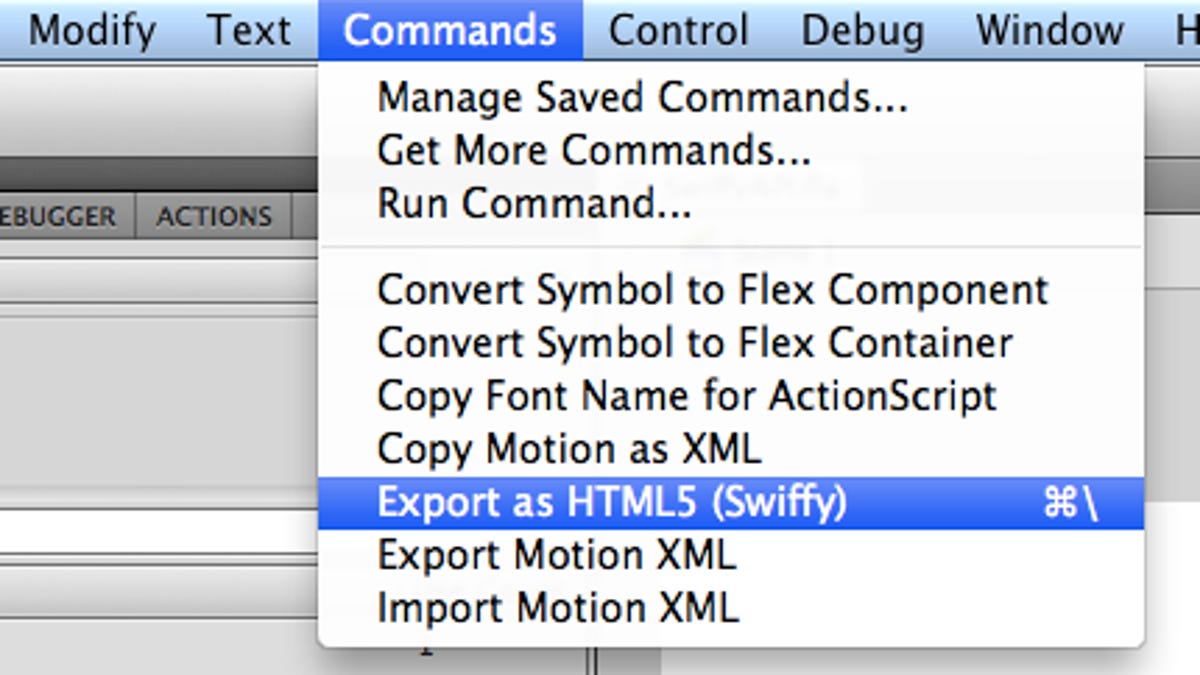Google HTML converter becomes Flash Pro plug-in
The software taps into Google's Swiffy service to help Flash developers embrace Web standards by converting their Flash content.

Google has released a plug-in that lets Flash Pro users convert Flash's SWF files into HTML code directly from the Adobe Systems developer tool.
The plug-in links to the Swiffy service Google operates to convert Flash to Web standards including HTML (Hypertext Markup Language), SVG (Scalable Vector Graphics), and CSS (Cascading Style Sheets). Those Web standards let people see the content in a browser without relying on Adobe's Flash Player plug-in.
"The extension enables you to convert your animation to HTML5 with one click," said Esteban de la Canal, a Google programmer, in a blog post today. "The extension is available for both Mac and Windows, and it uses Swiffy as a Web service, so you'll always get our latest and greatest conversion."
Although the vast majority of browsers on personal computers have Flash Player installed, it's a rarity on mobile devices, especially because it's banned altogether from Apple's iOS. Last week, Adobe announced it's scrapping the mobile version of Flash Player, a move that raises the profile of tools to convert Flash content into Web-standard content.
One of the biggest issues with making Web-standard content is the relative immaturity of the developer tools. Flash Pro, though, is well established and widely used.
"One of our main aims for Swiffy is to let you continue to use Flash as a development environment, even when you're developing animations for environments that don't support Flash," de la Canal said.

